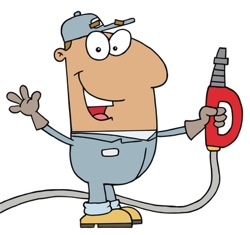Fueling Emotion
 We all know what throwing gasoline on a fire does; it fuels the fire. Thinking about an emotion does the same thing.
We all know what throwing gasoline on a fire does; it fuels the fire. Thinking about an emotion does the same thing.
When you talk to yourself inside your head (think) about your emotions, you fire them up while you burn yourself down.
The Grasshopper interrupted me with this during an emotional fueling session the other day: “Feel the emotion; don’t fuel it.”
Feeling an emotion is an in-body experience. That means you have to get out of your head to feel it.
As long as you fuel the emotional fire with thought, it will continue to burn out of control.
When you begin to focus on the sensations in your body that the emotion is producing, you extricate yourself from the flames of thought and the mental fire starts to burn out. This practice will not only calm you, it keeps your brain from getting fried.
Answer this question: What makes you feel worse, being physically tired or mentally tired? I’m betting you answered mentally tired. Mental tiredness is a direct result of inflammatory thinking. It takes its toll.
When you’re upset and notice yourself fueling that upset with thoughts to justify it, stop the train of thought by locating the sensation in your body. I guarantee you it’s there. The sensation usually registers somewhere along the midline of your body – from your throat to your bowels and everywhere in between.
When you find the sensation (tense throat, constricted chest, tight stomach, gurgling bowels or whatever sensation that goes on with you), take the time to feel it in your body, not talk about it in your head.
This one direct action on your part will begin to metabolize the emotion and its flames will die out.
When you catch yourself thinking about how bad things are in your head, feel the sensations in your body instead. When you focus on the fire in your belly, you snuff out the causative flames in your mind. It’s not too long afterward that the smoke clears and you can see your way through.
Practice this technique when your dealing with just a small campfire so you can see its effectiveness. Then when your own the practice, you’ll have the training to deal with a 4-alarm fire.
All the best,
John
Be Sociable, Share!

